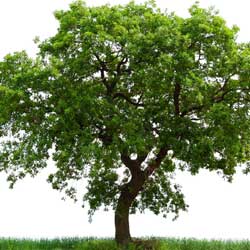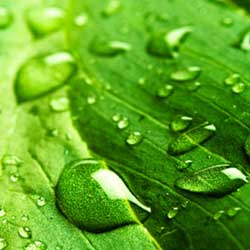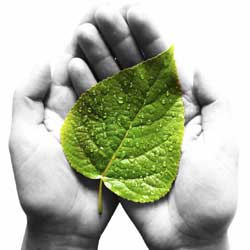Protecting Trees From Drought Stress
Protecting Trees From Drought Stress
Summer can be the most stressful time of year for landscape plants with heat and drought being the main offenders. When not receiving sufficient moisture, plants are much more susceptible to insect and disease damage. Trees are the most valuable landscape plants and can be the most difficult to replace, so it is sensible that they should be given priority during periods of drought.

Identify Drought Trouble
Lack of water is not a clear indication of a drought when it comes to trees. Many trees have deep, active roots that can easily survive short periods without rain or moisture, but it is important to notice when they are starting to become drought-stressed. Wilting and curling leaves will appear on drought-stressed deciduous trees. Leaf edges will eventually turn brown and crispy and may drop prematurely. Evergreen needles will begin to turn brown at the tips. As the drought continues, the entire needle will turn brown.
Prioritize Which Trees to Help
Generally, the trees most at risk are those that are newly planted or transplanted, as well as any younger trees. The root system of these plants is underdeveloped or has been damaged by the planting. Trees that are growing in a restricted area should also be of greater concern. This includes trees planted in containers, the narrow grass strip between the street and sidewalk and trees grown adjacent to your house or driveway where they suffer more from reflected heat and have less underground space to spread their roots to collect sufficient moisture. Drought-sensitive plants like birches, beeches, dogwoods, Japanese maples and magnolias should also be given priority during drought conditions.

Watering During a Drought
It is best to begin good watering practices before the tree succumbs to drought stress. Trees need approximately one inch of water per week. If Mother Nature is not supplying it then you should.
It is best for the tree if the required water is applied all at one time to the soil, slowly and deeply. This can be accomplished by using irrigation bags on newly planted or small trees. Trees in a restricted area are best watered with a slow dripping hose placed at the base of the tree and moved frequently for even distribution. For larger trees, a soaker hose laid in a spiral pattern, radiating from the tree trunk out to the drip line, works well.
Take care that if your community has watering restrictions during drought conditions, you follow approved practices to maintain your trees without risking fines or fees from illegal watering.
Tips for Helping Drought-Stressed Trees
- Always water the soil and not the leaves or needles of the tree.
- 2-4 inches of mulch placed over the soil, under the tree, from the trunk to just beyond the drip line, will help conserve soil moisture. Do not mound mulch against the tree trunk, which can encourage insects.
- Water on overcast days, early in the morning or in the evening. Evaporation is slower during these times and more water will soak down to the roots.
- Fertilizer can injure tree roots during times of limited soil moisture. Avoid using fertilizer during drought conditions. If amendments are necessary, choose compost or other gentle options instead of harsher fertilizers.

You can help your trees resist drought conditions with a little thoughtful care, and they will continue to thrive to help provide shade and beauty in your landscape.












